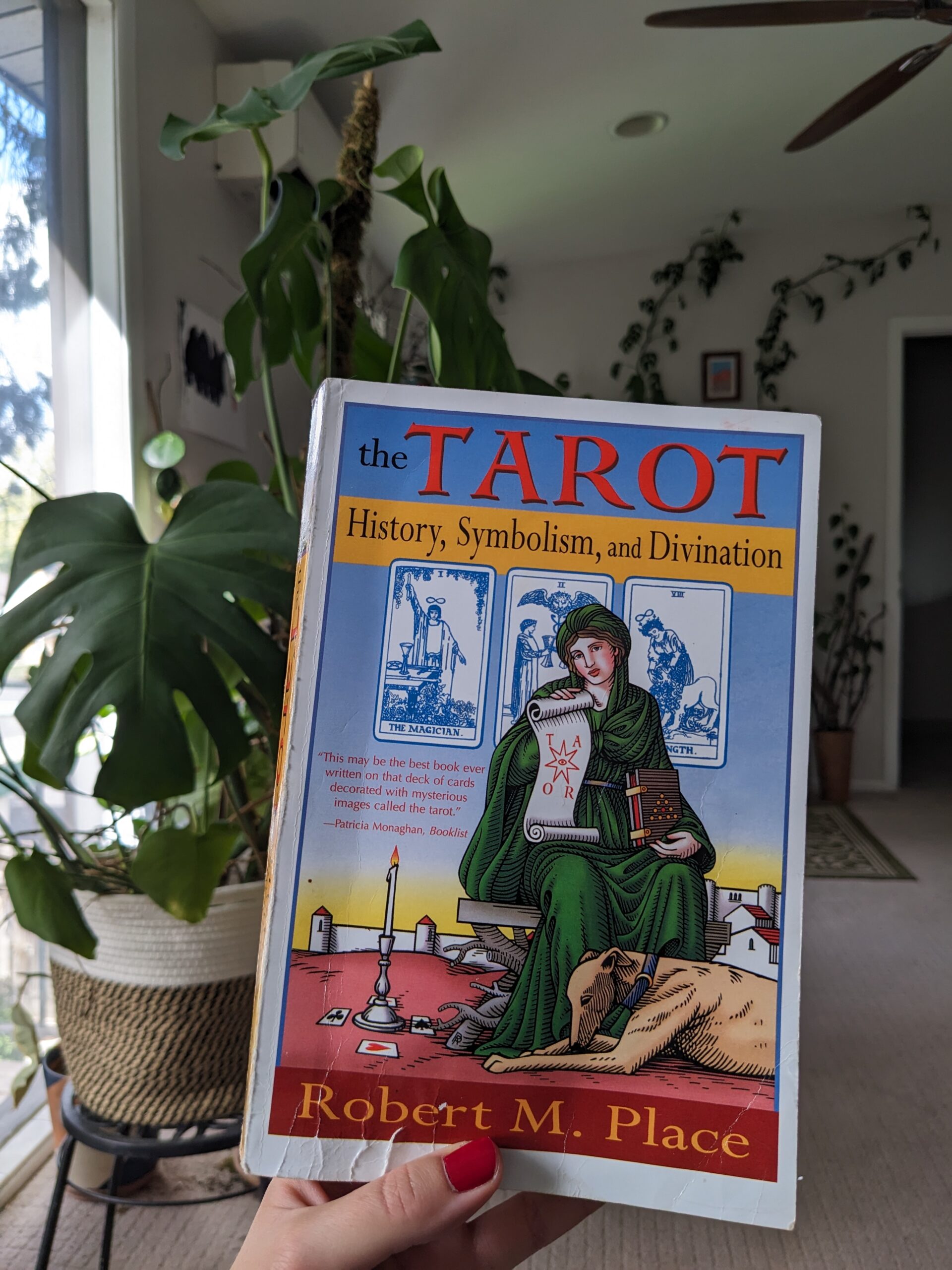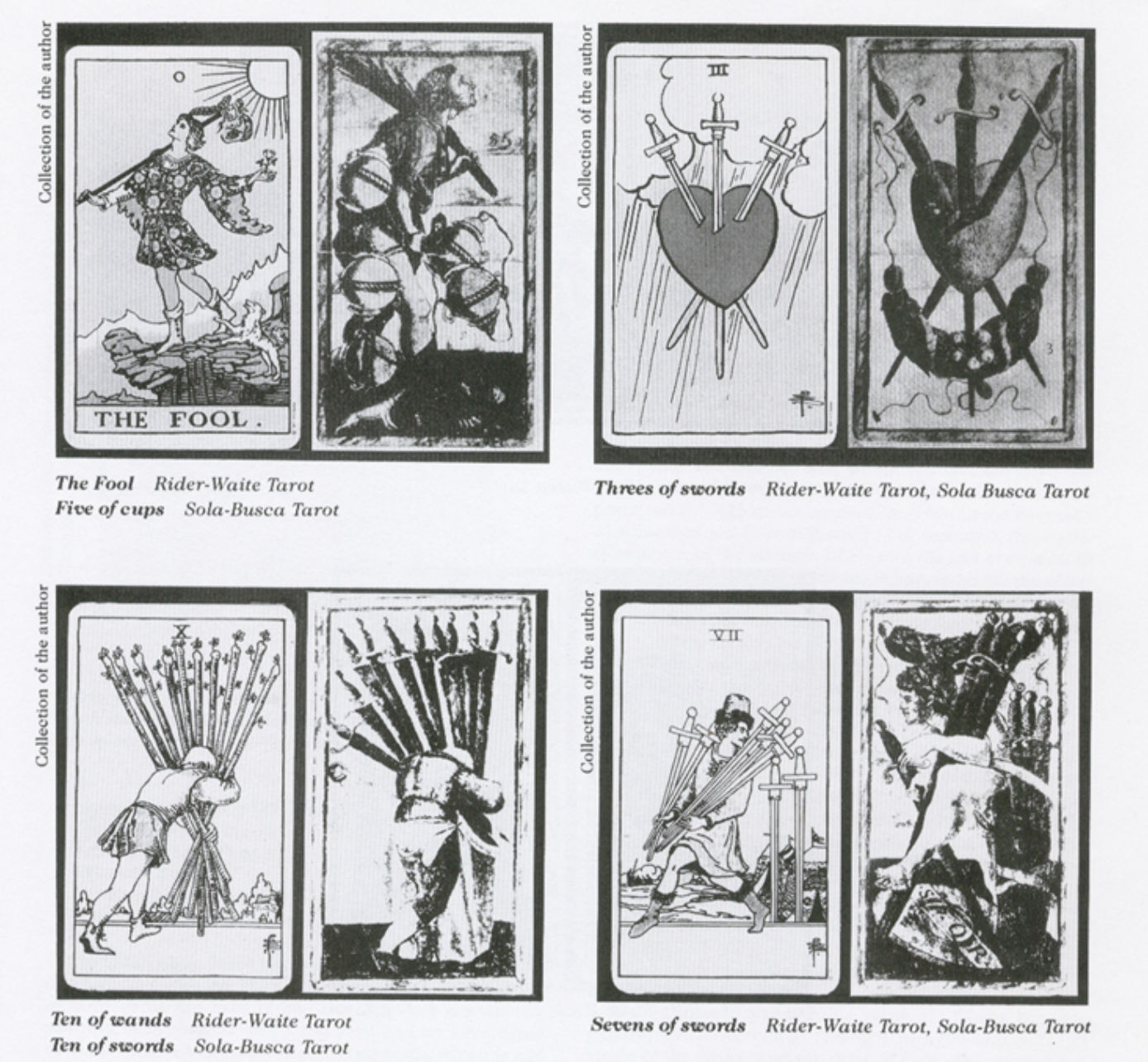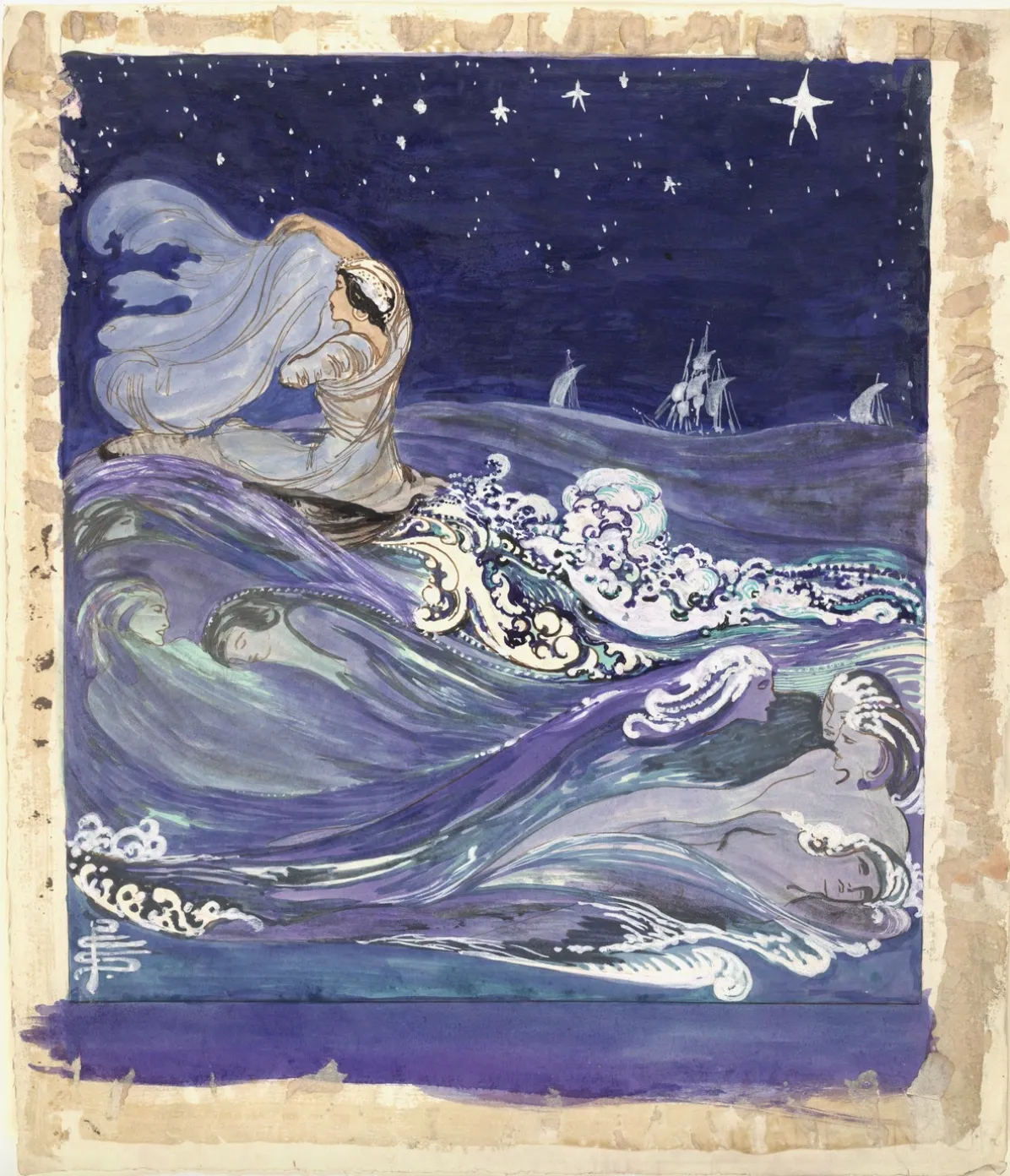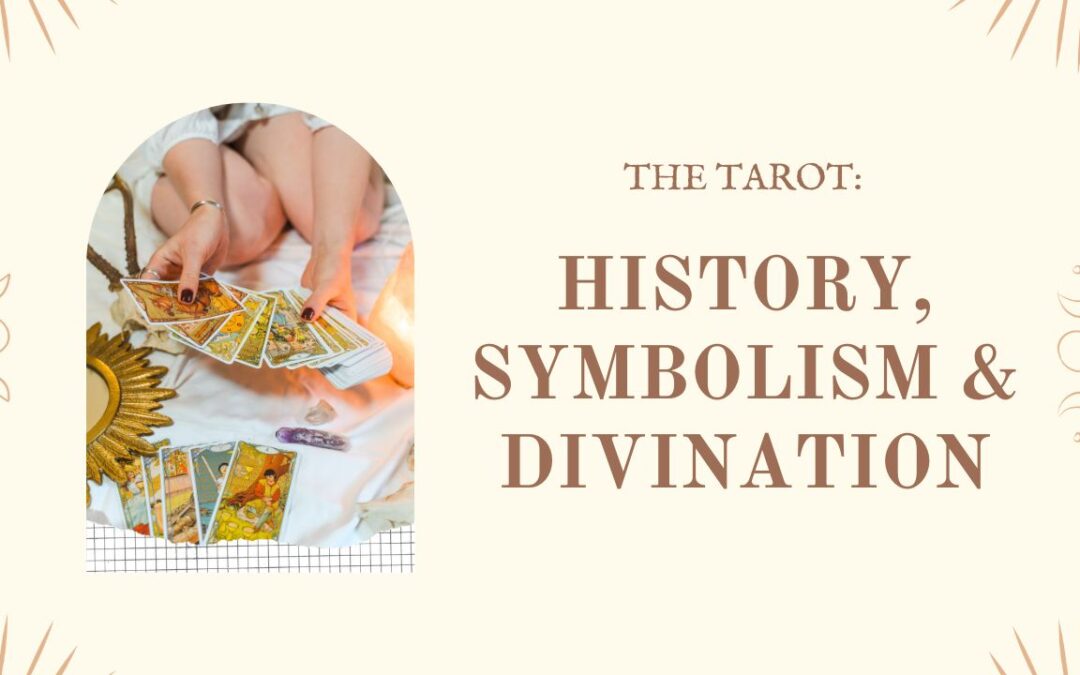Sometimes I finish a book and immediately start it again. That’s what happened with this one.

Before I read this, I thought: eh, I know enough about tarot history. I’m not an expert but I can hit on the key points (started as a game in Renaissance Italy, picked up by occultists, blah blah blah). Besides, it’s kind of a boring topic. I’d rather talk about tarot’s present, or tarot’s future.
Turns out that first of all, tarot history is far more fascinating than I thought. Like how the first High Priestess card may relate to a 13th century woman who inspired a heretical movement with the belief that female popes were poised to rise up in the Catholic church. Or how the first occultist to popularize tarot divination was almost denied publication by the royal censor, possibly due to sabotage by another occultist.
And secondly, smart people have said that studying history is the best way to have a better foundation in the present, and a more robust springboard for the future. Guess I have to admit they have a point.
So! Before we go further, a bit of context about this book. Published in 2005, author Robert M. Place draws heavily upon the work of tarot historians Ronald Decker and Michael Dummett (I haven’t read their book A Wicked Pack of Cards: Origins of the Occult Tarot but I know it is widely respected). But this is far from a regurgitation of existing research. With a respect to historical facts, Place comes into this work with the thesis that ‘tarot is like a door that opens onto the Western Mystical Tradition.’ The tone of the book is somewhat academic and no-nonsense, but it still approaches tarot as a tool with authentic mystical value.
The book begins with a punchy section on tarot history. I say punchy because it’s only 26 pages but covers a lot of ground. I’m talking, we start with the invention of paper in 2nd century China and go into the development of playing cards in China, the Islamic world and eventually into Europe. Renaissance Italy is when the deck really became tarot, with the addition of the ‘trump’ cards (ick, can’t type the word trump without wanting to throw up in my mouth a little).
Side note but I found this interesting: at some point Place points out that a lot of what we now know about tarot history was only really verified in the past ~40 years. As its now been ~18 years since this book was published, I’m not sure how much new info has surfaced. But for its time, at least, I think the history info presented here was meticulously researched.
A few things that stood out to me from this first chapter because they really did recontextualize my understanding of tarot: Place clarifies that the Visconti-Sforza cards are the oldest EXISTING tarot cards, but not the oldest KNOWN. These cards were hand painted for the rulers of Milan, likely in the 1450’s, and if you know a bit about tarot history you’ve probably heard of them. There are records that show older decks existed, but they have not survived that we know of. This was news to me because with my very basic understanding of tarot history I was under the impression the Visconti-Sforza did indeed represent the very first tarot decks.

Visconti-Sforza tarot cards, image via Wikipedia
A random thing that fascinated me about the Visconti-Sforza: The Tower, The Devil and the Three of Swords are missing. Well, maybe they are missing, maybe they didn’t even exist in these early decks, Place says there’s no way to know for sure which is the case. Either way I love this idea and as I shared on Threads I think someone could write a great historical fiction about what happened to these cards.
Place pays some attention to the Sola-Busca deck which is another one you might have heard of because it is an early example of more fully illustrated pip cards (vs most older decks that simply show suit tokens for the numbered cards). I knew about the Sola-Busca from Rachel Pollack’s wonderful book Tarot Wisdom and I also knew that it inspired some of Pixie’s illustrations for the Waite-Smith deck several hundred years later. Rachel includes side by side illustrations of both decks, but I was kinda like ‘meh, they don’t look THAT alike.’ I mean, some are very obvious like the Three of Swords. But until Place pointed out some of the more subtle similarities, I didn’t connect the extent of Pixie’s inspiration.

Photos from Stuart Kaplan’s ‘Encyclopedia of Tarot’
Now, with my previously basic understanding of tarot history I’d always believed the oft repeated statement that TAROT STARTED AS A GAME DURING THE RENAISSANCE, and wasn’t used for divination until the occultists got interested a couple hundred years later. But! Place says there is ‘conclusive’ evidence that regular playing cards were used for divination during the Renaissance, and although we may not have definitive proof, it is possible/likely that tarot cards were as well.
Now these are references that come from the 16th century, but Place shares a description of a party game, supposedly played during the Renaissance, where tarot trumps were distributed to guests and everyone else would describe why that card matched that individual. Sounds fun, should we bring this back?
In closing out this first chapter, Place points out that an effort to pinpoint the ‘first’ or ‘true’ tarot is futile. He describes it as a collective art, something that many people have had hands in developing. Very true and this is one thing I love so much about tarot. And the development is ongoing to this day, I say!
The next section of the book, The Mythical History of the Tarot, is where things get even more interesting. Place thoroughly details the tarot lore purported by occultists starting in the 1780s and all the way through the Golden Dawn and the creation of the Waite-Smith deck. I knew some of the basic stuff about Court de Gébelin and Etteilla and how they really started this whole shebang by claiming the tarot had origins in ancient Egypt.
Of course, most modern tarot readers know the supposed Egyptian origins are inaccurate. But I’m not sure most modern tarot readers know that many of the concepts you still work with today were originally put forward specifically by Etteilla in the 1700s. Like, I knew the dude was influential but he seems to be the first to do ALL of these things:
-
use the word cartomancy
-
connect the four suits to the four elements
-
publish a book on tarot divination
-
change the suit of coins to be pentacles, or magical talismans
-
link tarot to astrology
-
introduce the concept of reversed cards
Not bad for a guy who started out as a humble seed merchant. Fun fact: he’s also the one who was almost denied publication by the royal censor, rumor has it this was because of his rivalry with Court de Gébelin.
I won’t go into every interesting thing in this portion of the book because we’d be here all day and you can just like, read the book for that. But it is all quite interesting to see Place attempt to “separate the kernels from the chaff” when it comes to the ideas, hoodwinks and shenanigans of the early occultists.
As I mentioned earlier, this book is meticulously researched and largely concerned with facts. But Place still strongly holds that tarot is indeed a mystical tool. Some of the ideas presented by occultists may not be literally true, but still have symbolic resonance (others are flat out harmful bullshit, so we must be discerning). So here’s where we get into what seems to be the thesis of this book:
Tarot originally developed during the Renaissance. This was a time where many old mystical ideas were being rediscovered and reinterpreted. Some mystics of this time had a particular interest in fusing the teachings of Christianity with the teachings of Plato, in what is now known as Neoplatonism. Place describes several schools of thought which loosely fall under the Neoplatonist umbrella including hermeticism and alchemy, and lays out the case that these concepts were widespread during the Renaissance and it is not unlikely that their influence seeped into the creation of the earliest tarot decks. In Place’s opinion:
Tarot expresses a mystical Neoplatonic philosophy. Specifically, the tarot trumps are an allegory of the soul’s journey to immortality or enlightenment. This allegory is expressed in three groups of seven cards. Symbolically, the number seven is associated with the Neoplatonic ladder of seven planets that forms a stairway by which the soul ascends to the spiritual realm…
The three groups of seven cards allow the sevenfold ladder to be repeated on three levels of increasing spiritual awareness. These three levels are related to Plato’s theory of the three aspects of the human soul.
The tarot also makes use of the triumphant parade as an organizing principle and a metaphor for the triumph of the soul. Tarot is one of numerous works of art from the Renaissance that make use of the same metaphor to express a mystical story…the philosophy expressed in tarot has its roots in ancient mysticism.
Right now I’m trying to stop myself from going on a tangent about the three rows of seven cards thing. This is a concept I’ve been familiar with since my early days as a tarot reader, and it is another thing I was introduced to by Rachel Pollack. It was only through reading this book by Place that I realized some version of this theory has been around since the 1700s, originally introduced by de Gébelin’s colleague de Mellet. It has evolved and been reimagined many times since then, but is still a popular framework for considering the cards today.
Returning to the idea of the ‘triumphant parade’: credit must be given to tarot scholar Gertrude Moakley, who made major breakthroughs in tarot history. While not all of her theories turned out to be correct, she published several bombshell pieces on tarot history during the 1950s and 60s. IT IS A CRIME THAT I HAD NOT HEARD OF HER BEFORE ROBERT M PLACE MENTIONED HER IN THIS BOOK.

Gertrude Moakley, image via tarot-heritage.com
Moakley was the first to suggest that the tarot’s trumps could have originally been related to I Trionfi, the famous 14th century poems by Petrarch which were very popular at the time tarot emerged. The general consensus now is that the cards do not line up perfectly with the poem, but Place believes that nonetheless tarot is part of the same tradition as I Trionfi, which also has heavy Platonic themes.
Moakley also kickstarted the movement to give Pamela Colman Smith credit for her work, and it was Moakley who started referring to the deck as “Waite-Smith” (with it previously being referred to most commonly as “Rider Waite,” Rider being the publisher and Waite being, of course, Arthur Edward Waite).
In the next chapter Place goes into each major arcana card and more thoroughly explores what he believes to be the earliest influences for them. This is where we get the anecdote about the High Priestess (known as the Papesse in these early decks) that I alluded to earlier. Place writes:
“In the 12th century the monk Joachim of Flora had an epiphany… (of a) New Age, in which the Church would be dissolved and individuals would communicate directly with God. His vision inspired the Guglielmites. Their founder, the visionary heretic Gugliema was believed to be an incarnation of the Holy Spirit. Gugliema predicted that in 1300 the New Age would begin and there would be a line of female popes. Her followers elected Sister Manfreda, a relative of the Visconti family, as the first papesse. The inquisition destroyed the sect and although when they found the new papesse she was already dead, they burned her body at the stake. Moakley believes the Visconti-Sforza Papesse card is a portrait of Sister Manfreda.”
Now! Let us not commit the fashionable stupidity of only focusing on the major arcana and not the minors. Place explores the history of the four suits all the way back to the Mamluk decks of the 13th century. Place believes it is likely that the four suits of the Mamluk decks represent aspects of the life of a Mamluk noble (as with the later Italian decks, these decks were created for the wealthy). Place speculates on how the correlations to the four suits may have evolved once the cards reached Europe, and also touches on the various correlations occultists have proposed.
This is as good of a place as any to talk about the terms major arcana and minor arcana. This nomenclature comes to us courtesy of 19th century occultist Paul Christian. This guy was sketchy overall, to be honest. Place notes that the authors of A Wicked Pack of Cards describe him as “that rare thing among those encountered in these pages, a wholehearted charlatan.” He forged evidence connecting tarot to ancient Egypt. Not cool. BUT! He gave us something way better than ‘pips and trumps’ to call deck components and I’m really grateful for that.
Then this book blew my frickin’ mind when it comes to my boy Carl Jung. I had a passing knowledge of Jungian psychology when I first got into tarot. All on my own, I connected the four suits to Jung’s four functions. I was feeling pretty proud of myself until I realized I was FAR from the first person to do this – Jung has been a touchstone to tarot readers since at least the 1960s if not earlier.
So it’s not that Place mentioned Jung’s psychological functions that blew my mind, it’s the way he’s done it. I’ve always seen the correlations as Wands to Intuition, Swords to Thinking, Cups to Feeling, and Pentacles to Sensation. But Robert M Place switches Cups and Wands, attributing Cups to Intuition and Wands to Feeling. At first I was like ‘nah nope no’ but he makes an interesting case for this. According to Place, Jung’s feeling function is commonly misunderstood. This function is not about emotions. It is ‘a decision-making function that determines if something is good or bad and motivates one to action, symbolized by fire.’ I’m not sure I’m converted but I will certainly be thinking more about this.
Sidenote: last year I did a presentation at a tarot conference about the four suits and I talked a lot about Jung’s functions. Maybe someday I’ll record that for YouTube or something. If you’ve read this far and would have an interest in that let me know lol.
Well, well, well. The time has come to talk a little about none other than Arthur Edward Waite.
In some tarot circles it’s become trendy to hate on Waite. And sure, he isn’t above critique. His deck, as influential as it is, isn’t the end all be all. As was stated early, tarot is a collective art, always evolving. Waite is just one of many folks who have had a hand in the development of this collective art, but he really did some important things.
First of all, Waite is sometimes lumped in with all the other early occultists. But he would have hated this, I think. Waite considered himself a scholar and a mystic moreso than an occultist, and he went to great lengths to correct misinformation disseminated by his predecessors. The whole section about Waite’s involvement in the Golden Dawn is fascinating but I won’t regurgitate the whole thing here because again you can just read the book!
I do want to mention a lovely anecdote about Pamela Colman Smith aka Pixie aka the artist behind Waite’s tarot. Place describes her as part of the symbolist art movement and says that while she was illustrating, she would listen to music, go into a sort of trance state, and paint what she saw: “for example, while listening to Beethoven she painted a majestic queen in flowing robes standing on the sea carrying a small ball-like moon in her hands.” I’m not sure this is the piece described but it is a beautiful example of her work either way.

undated watercolor by Pamela Colman Smith
Another fact I learned about the Waite-Smith deck from this book: the entire freakin’ thing seems to have been created in ONLY SIX MONTHS. This is truly…wow. I mean, it took Annie and I three years to create the Spacious Tarot but okay.
Pixie famously wrote to a friend that she “finished a big job for very little cash” and stated she’d completed 80 illustrations for the project. Most people believe the extras were title cards, but this is another thing I mentioned on Threads: what if she created two secret tarot cards that somehow never made it into the deck? Seems unlikely but it’s a fun idea.
The next portion of Place’s book goes through each card in the Waite-Smith individually which to be honest I found kind of unnecessary as many cards get only one or two sentences, but there was some interesting info here.
The final chapter is devoted to the art of actually reading the cards. Place has some very particular methods which I haven’t tried and not sure if I will but I can respect them. He’s pays a lot of attention to directions in his three card spreads, explaining how the way the figures face impacts the ‘flow of energy’ in a reading. If you’re into more systematic methods of interpretation this could be fruitful to try out.
However, despite favoring what to me seems like a more analytic method of reading the cards, Place also highlights the role of intuition. At one point he even says that when you lay out the cards you should:
Interpret (tarot) as you would a dream or a story. At this point, one should forget everything one has learned about the meaning of the cards. Simply look at the layout. Often this causes a momentary panic when one realizes that one does not know what the cards mean. I often feel this myself. This is good, it is a sign that the ego is letting go. Take a deep breath, relax, and simply look at the cards. With patience, the cards will start to make sense in their own way.
Yes! This basically looks like something I would write. Hard agree. And this, my friends, is why I get annoyed at the age old debate of “intuitive vs analytical” tarot readers. Like…we are almost all both??? They can coexist??? I’m very tired of that debate popping up in the tarot community, but I’ve accepted it is something that always rears its ugly head no matter how many times it is addressed.
Well my friends, I need to wrap this up somehow. So what is my conclusion on the book Tarot: History, Symbolism and Divination by Robert M Place?
It is a very good book. I learned a lot and in many ways it really did recontextualize my understanding of tarot. I’m not sure I’m completely sold on Place’s thesis about tarot and Neoplatonism, but I do find it interesting. I think this would appeal most to those of you who want to learn more about tarot history. I don’t think you need to be an expert on tarot history to read the cards, but if you are a tarot nerd as I clearly am you’ll likely find it a compelling read.
So…yeah! That’s my review, I guess. Or at least a bit of a chaotic presentation of my thoughts on this book. A personal note as we wrap up: I haven’t written a long-form piece like this in a while. I miss it, but I’m out of practice. I very much appreciate you reading if you’ve stuck around this far.
As you may or may not have noticed, I’m publishing this on Substack. This is something I’m experimenting with. A lot has changed in the nine years since I started out as a professional tarot internet person. Back then, the norm was that blogging/social media/other content was something you did for free to generate interest in your readings or paid offerings. Now it is possible to get paid for ~creating content~ which I’m not doing yet, but I am interested in this as an option for the future, which is why I’m trying out Substack. If you were already on my mailing list, I’ve imported you here as a FREE subscriber. I hope that’s okay but you can unsubscribe if not!
I love creating and writing about tarot, but I’ve been really inconsistent in my output the past few years because…well…it doesn’t make me money, and because of capitalism, I have to focus more energy on stuff that does. Boo. For now I’m keeping my Substack free to see if I can even manage to stick with it, but that might change in the future. I dunno. Just letting you know for full disclosure, I guess!
One last note on the personal business side of things: my website is still carriemallon.com and eventually I will post Substack pieces onto the blog over there as well. But at the moment I am in a terrible tech nightmare with WordPress where I am unable to update anything on my site. Fingers crossed I can resolve that shortly…
Okay, I’m really done now. I very much appreciate you reading and sharing this new space with me. I hope you found something interesting here and I look forward to connecting with you again soon.

